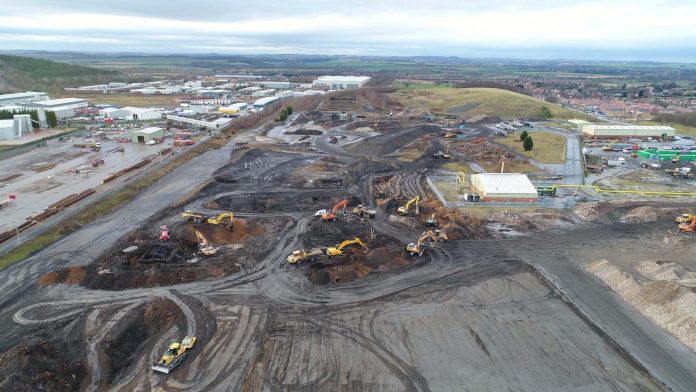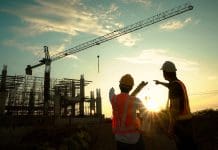In our 2018 report, Building on Brownfield, the Environmental Industries Commission (EIC) put forward a series of proposals for more effective regulation of brownfield. Our latest research, Brownfield First, takes our thinking to the next phase, outlining how brownfield is, in fact, key to meeting government ambitions on housing and levelling up
Our new report outlines a missed opportunity for brownfield. It can provide the land for more homes, close productivity gaps, boost the regional construction sector, enable placemaking and help create more attractive environments for communities to enjoy and businesses to locate in. Inspiring high-profile examples of brownfield development, such as the former Olympic Park in the East End of London, should be encouraging more to put forward brownfield proposals.
The week following its publication, brownfield was mentioned in speeches by both the Prime Minister and the recently appointed secretary of state for levelling up, housing and communities Michael Gove MP at the Conservative Party Conference. Both welcome interventions demonstrating strong political backing in realising brownfield’s untapped potential.
The Department for Levelling Up, Housing & Communities has since announced its intention to ensure thousands of new homes are built on underused and derelict land to regenerate local areas and help people on to the property ladder. The funding could also support up to 17,000 jobs across the housing and construction sector and the wider economy. This only strengthens the arguments EIC are making in this policy space.
Covering the full supply chain of our world-class remediation industry, the members of the working group that inputted to the report included academics, consultants, contractors and the laboratories that carry out soil testing.
As a result, we have an unrivalled base of expertise to draw from and a real-life understanding of the issues at the “coal face”, including my own experiences from over two decades providing technical and commercial consultancy for contaminated land management.
A missed opportunity…
Despite the many benefits of brownfield development, developers are increasingly turning to greenfield sites. In 2014, 40% of newly residential development in England was on land that had already been developed. By 2018, this proportion had dropped by 20%.
Currently, more than 50% of sites listed as suitable for housing development on local authority brownfield registers have not been awarded planning permission.
This trend away from brownfield development is caused by a number of reasons – the lack of economies of scale, the technical difficulties inherent on some small sites and the additional costs and uncertainties involved in remediating ground contamination – can all be factors.
Our recommendations aim to revitalise this sector once more and build brownfield’s viability in all senses of the term, placing it as the realistic alternative to building on greenfield sites and a key driver for levelling up.
What should we do?
Increasing brownfield development will unlock the land needed to meet the housing crisis, make regional economies more productive, boost local construction firms and help create more attractive environments for communities to enjoy and businesses to locate in.
Britain’s brownfields sites are an untapped resource. Local authority brownfield registers contain over 20,000 sites – enough for over a million homes – with another 30,000 hectares available for non-housing development. Despite this, and as mentioned above, developers are moving away from brownfield development, with the proportion of new homes built on brownfield declining.
To reverse this trend, we believe that we need to amend planning reforms, improve the economic viability of marginal brownfield projects and ensure the levelling up and build back better announcements incentivise brownfield development.
On planning, we want to see new Local Plans become a driver for targeted local development by implementing the Construction Leadership Council (CLC) recommendation of a fourth “regeneration” zone and the addition of a greenfield surcharge to the government’s proposed new infrastructure levy.
We would also like to see land remediation tax relief on sites with fewer than 25 units, updating the tax relief definition of derelict land to incorporate all sites abandoned for more than 10 years. We believe this would improve the finances around brownfield development, which can sometimes be challenging.
Finally, we propose that the appraisal metrics for the National Infrastructure Bank and Levelling Up Fund – and similar programmes in the future – could proactively reward brownfield development proposals.
Building back better to level up
We believe that these changes are key to seeing brownfield fulfil its potential. Not just to deliver the homes this country needs but as the cornerstone on political ambitions around levelling up and building back better.
It is clear in my mind that the government – strong on rhetoric – now needs to find the policies that will help it deliver on these ambitions and prove to voters in the former red wall that their faith in the last election was not misplaced.
These post-industrial communities, with a wealth of brownfield sites that could support local development, homes and more, could be at the centre of a renewed political focus on delivering levelling up. The proposals EIC has put forward are, in many respects, pragmatic and simple, yet in terms of their impact they could be transformative.
Levelling up simply has to start with unlocking more brownfield development.
Find out more about the report and download your copy at EIC’s website.
Peter Atchison
Chair, Contaminated Land Working Group
Environmental Industries Commission
Tel: +44 (0)207 222 4148
Twitter: @EIC_Updates
LinkedIn: Environmental Industries Commission
YouTube: Environmental Industries Commission














